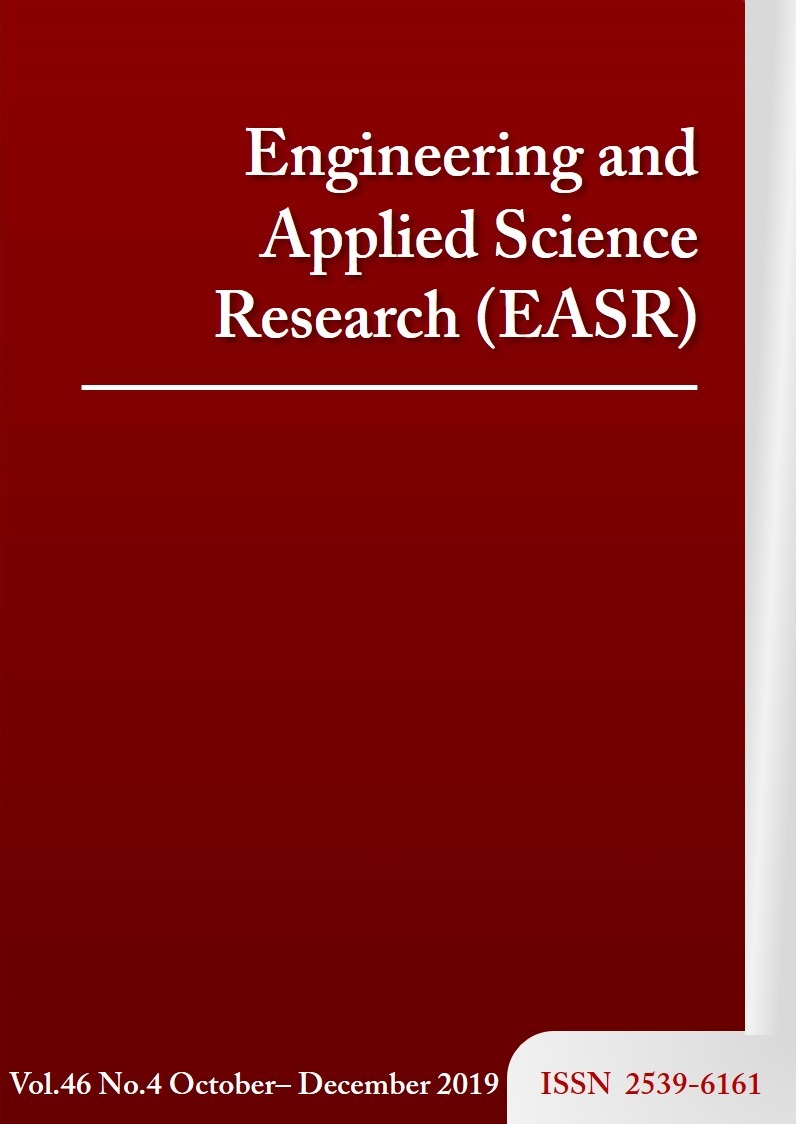Comparative study of travel behavior between Thai and Japanese informal transport users: A case study of Silor services in the Sukhumvit area
Main Article Content
Abstract
Silors are an informal public transport service found in various districts of Bangkok. They function as a primary transport mode and, on some routes, as feeder services, providing access to formal modes of transportation, such as bus and mass transit lines. This research aims to investigate users’ travel behavior and identify service delivery gaps through Importance Performance Analysis to propose policy suggestions that maximize user satisfaction and service performance. The study focuses on silor services in the Sukhumvit area as of it is unique in its high proportion of international users, especially the Japanese. A total of 39 Thai and 47 Japanese silor users were interviewed using a questionnaire survey. Socioeconomic variables, trip profiles, and perceptions of silor service quality aspects were comparatively analyzed. The results reveal that reliability of service is an aspect to be maintained whereas the in‑vehicle environment, road safety and customer services would make the operations more satisfying. Considerable variations in Thai and Japanese evaluations of this transport service quality aspects were found, and therefore, policy recommendations to bridge the service delivery gaps are discussed.
Article Details
This work is licensed under a Creative Commons Attribution-NonCommercial-NoDerivatives 4.0 International License.
References
[2] Sarkar PP, Mallikarjuna C. Effect of perception and attitudinal variables on mode choice behavior: a case study of Indian city, Agartala. Trav Behav Soc. 2018;12:108-14.
[3] Bakti IGMY, Sumaedi S. P-TRANSQUAL: a service quality model of public land transport services. Int J Qual Reliab Manag. 2015;32(6):534-58.
[4] Rahman F, Das T, Hadiuzzaman M, Hossain S. Perceived service quality of paratransit in developing countries: a structural equation approach. Transport Res A. 2016;93:23-38.
[5] Choocharukul K, Sriroongvikrai K. Service characteristics of informal public transport: A case of Bangkok’s small-sized converted pickup trucks. Proceedings of the Eastern Asian Society for Transportation Studies. 2011;8:1-13.
[6] Tangphaisankun A, Okamura T, Nakamura F. Study on influences of paratransit on mass transit connectivity in developing countries: a case study of Bangkok. J Jpn Soc Civil Eng. 2009;26(4):781-90.
[7] Grujicic D, Ivanovic I, Jovic J, Dovic V. Customer Perception of Service Quality in Public Transport. Transport. 2014;29(3):285-95.
[8] Putra AA, Yamin JM, Riyanto B, Mulyono AT. The satisfaction analysis for the performance of public transport urban areas. IRJES. 2014;3(8):38-44.
[9] Rinuastuti BH. Consequences of cultural and behavioral difference of tourists: study of Australian and Indonesian tourist who visit Lombok Island, West Nusa Tenggara. J Ind Tour Dev Std. 2015;3(2):53-60.
[10] Fowzia Sultana M. Marketing of tourism in Kodaikanal [dissertation]. India: Department of Commerce, Yadava College; 2015.
[11] Zondo PK, Ezeuduji IO. Comparing local and international tourists’ perceptions of service experience dimensions of an attraction and a destination: the case of South Africa. AJHTL. 2015;4(2):1-15.
[12] Bajada T, Titheridge H. The attitudes of tourists towards a bus service: Implications for policy from a Maltese case study. Transport Res Procedia. 2017;25:4114-29.
[13] Crotts J, Abraham P. The effect of national culture on consumers’ evaluation of travel services. Tourism Cult Comm. 2003;4(1):17-28.
[14] Martilla JA, James JC. Importance-performance analysis. J Market. 1977;41(1):77-9.
[15] Yang LJ, Chou TC, Ding JF. Using the Importance-Performance Analysis (IPA) approach to measure the service quality of mobile application stores in Taiwan. Afr J Bus Manage. 2011;5(12):4824-34.
[16] Department of Land Transport and Transport Institute. Current situation of Silor transport mode in Bangkok. Bangkok: Ministry of Transport and Chulalongkorn University; 2009.
[17] Ahmed ZU, Krohn FB. Understanding the unique consumer behavior of Japanese tourists. J Trav Tourism Market. 1993;1(3):73-86.
[18] Pizam A, Sussmann S. Does Nationality affect tourist behavior?. Ann Tourism Res. 1995;22(4):901-17.
[19] Reisinger Y. The perceptions of Australian hosts by Japanese tourists [thesis]. Australia: Faculty of Business, Victoria University of Technology; 1990.
[20] Synodinos NE. Understanding Japanese consumers: Some important underlying factors. Jpn Psychol Res. 2001;43(4):235-48.
[21] Tombs AG, Russell-Bennett R, Ashkanasy NM. Recognizing emotional expressions of complaining customers: a cross-cultural study. Eur J Market. 2014;48(7):1354-74.
[22] Weiermair K, Fuchs M. The impact of cultural distance on perceived service quality gaps: the case of Alpine tourism. J Qual Assur Hospit Tourism. 2000;1(2):59-76.
[23] Loyola M, Shiftan Y, Aviram H, Monterde-i-Bort H. Impact of public transport context situation and culture on mode choice. Soc Sci. 2019;8(2):1-12.
[24] Winsted FK. Evaluating service encounters: a cross-cultural and cross industry exploration. J Market
Theor Pract. 1999;7(2):106-23.
[25] Seo Y. Cultural impact on customer satisfaction and service quality evaluation in hotels [thesis]. Las Vegas: Graduate College, University of Neveda; 2012.
[26] Dace R. Japanese tourism: how a knowledge of Japanese buyer behavior and culture can be of assistance to British Hotelier in seeking to develop this valuable market. J Vact Mark. 1995;1(3):281-8.
[27] Fojt M. The kingdom of customer. J Serv Market. 1995;9(3):40-2.
[28] Hofstede G. Cultural consequences. Beverly Hills, CA: Sage; 1980.
[29] Burkhardt J. Critical measures of transit service quality in the eyes of older travelers. TRB Journal. 2003;1835(1):84-92.



